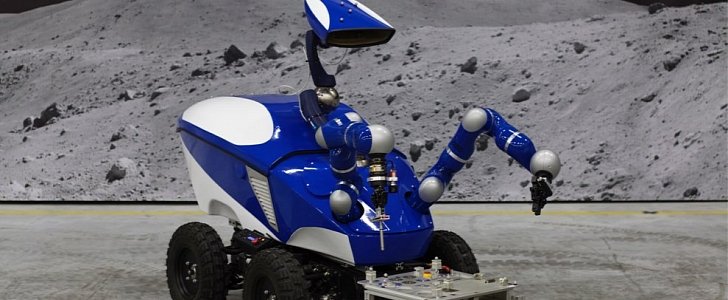Since we’re discussing drone delivery, why wouldn’t we consider robots instead of humans to create the space stations we’ll later populate? It sounds like a Christopher Nolan movie, right? Well, an astronaut has just performed a breath-taking experiment in which he placed a peg into a very tight hole. The thing is, he was in space while the robot was on Earth.
Not only does the robot cost about the same you’d pay for a proper sportscar, but it also has a great feature: it can feel. To be more precise, the astronaut handling it from huge distances away can sense what the machine does, a cutting-edge technology known as haptics. In other words, this WALL.E-shaped fellow can both see and feel, while being able to operate extremely accurate operations, such as placing a peg into a very tight hole.
While Danish astronaut Andreas Mogensen was on the International Space Station, he was remotely guiding the robot - called Interact Centaur - to do the job. We’re talking about great distances, considering the station was orbiting some 250 miles (400 kilometers) above Earth. But how was this possible in real-time? According to AP, it’s thanks to super swift signals bouncing off a dedicated complex system of satellites working in synchronization.
As if that wasn’t enough, then, the astronaut very slowly lowered a metal pin held by the robot into a tight hole in a task board with less than a sixth of a millimeter of wiggle room. The world premiere here is that when the pin was not aligned correctly Mogensen felt it hit the sides of the hole via the joystick he was operating on the space station.
How important is this “feeling” robot? Scientists believe we could be looking at the predecessor of future machines that could build space stations on planets.
We could use these robots on Mars, for instance, to create a landing site long before the astronauts get there. Much sooner, we could also use it on Earth, in remote areas or in places where humans could be putting their lives in danger. Think of Japan’s Fukushima nuclear power plant or the 2010 Gulf of Mexico oil spill.
We’ve listed a couple of videos concerning the project behind this groundbreaking experiment below just in case you want to discover more about it.
While Danish astronaut Andreas Mogensen was on the International Space Station, he was remotely guiding the robot - called Interact Centaur - to do the job. We’re talking about great distances, considering the station was orbiting some 250 miles (400 kilometers) above Earth. But how was this possible in real-time? According to AP, it’s thanks to super swift signals bouncing off a dedicated complex system of satellites working in synchronization.
As if that wasn’t enough, then, the astronaut very slowly lowered a metal pin held by the robot into a tight hole in a task board with less than a sixth of a millimeter of wiggle room. The world premiere here is that when the pin was not aligned correctly Mogensen felt it hit the sides of the hole via the joystick he was operating on the space station.
How important is this “feeling” robot? Scientists believe we could be looking at the predecessor of future machines that could build space stations on planets.
We could use these robots on Mars, for instance, to create a landing site long before the astronauts get there. Much sooner, we could also use it on Earth, in remote areas or in places where humans could be putting their lives in danger. Think of Japan’s Fukushima nuclear power plant or the 2010 Gulf of Mexico oil spill.
We’ve listed a couple of videos concerning the project behind this groundbreaking experiment below just in case you want to discover more about it.
